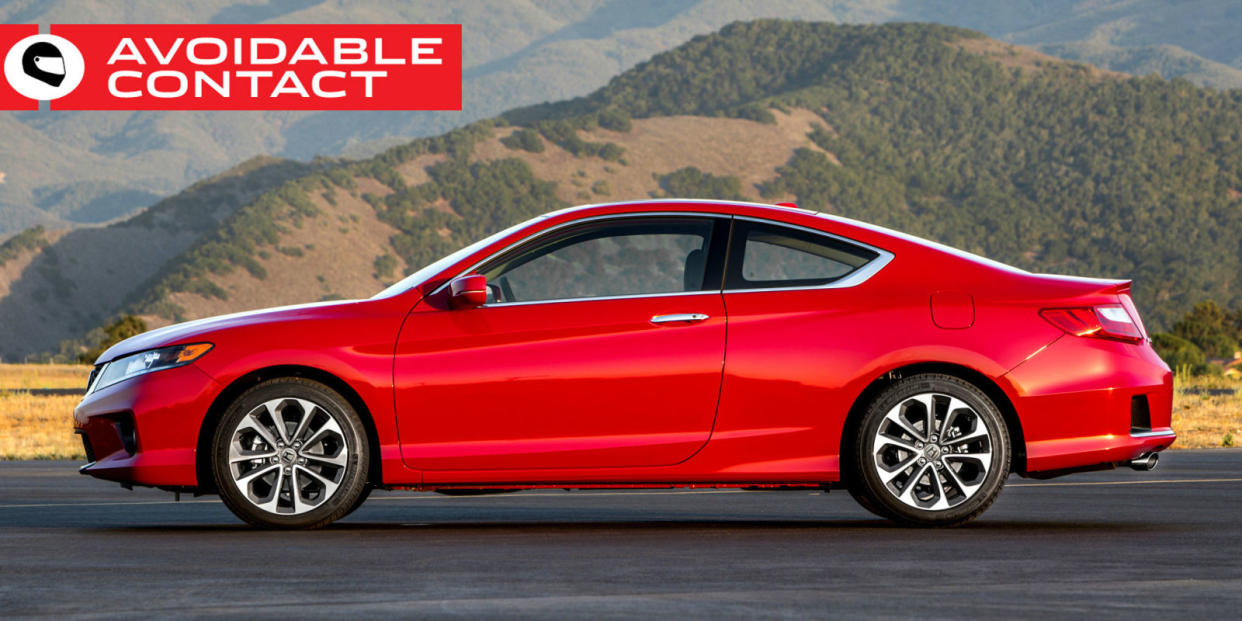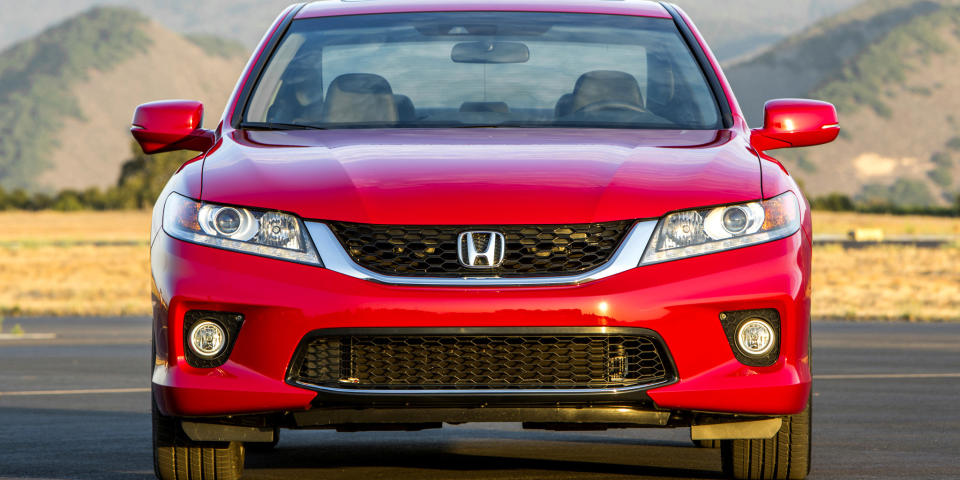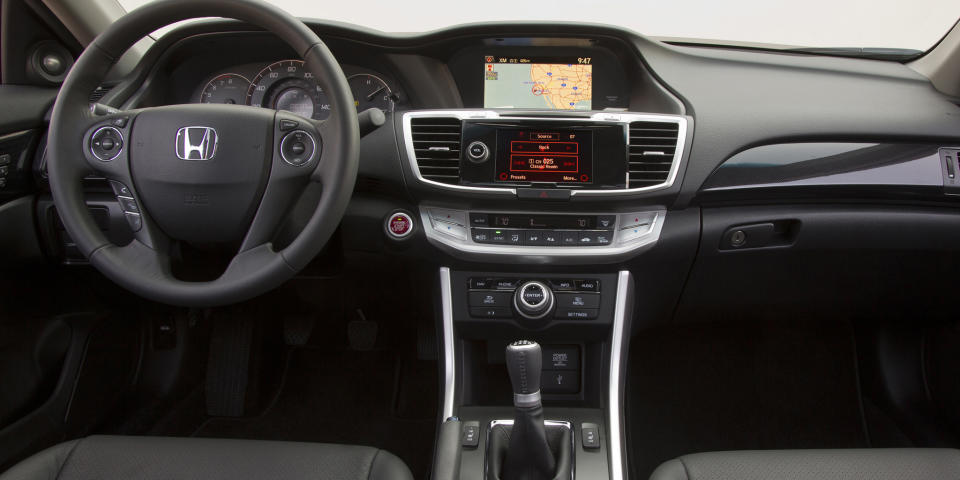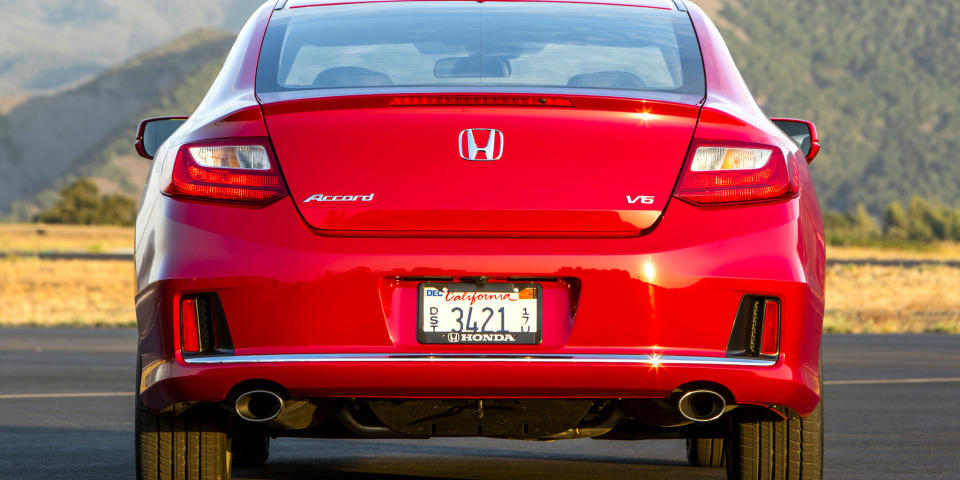The Accord V6 Coupe Is the Last Real American Muscle Car

Here's a question to occupy an evening at the cruise-in or the garage or the campground: Which car deserves the title of "first American muscle car"? Was it the 1949 Olsmobile Rocket 88, which also inspired the first rock-n'-roll song? The Chrysler 300? The Impala SS? Or was it the infamous 1964 Pontiac GTO, the first car to break the General Motors policy preventing big-bore V-8s in mid-size sedans? You can make a very solid argument for any of the above, not to mention several other legitimate contenders like the "Max Wedge" Dodge Dart.
Well, I don't claim to know what the first American muscle car was, but I can absolutely tell you what the last one currently for sale is. It's the 2017 Honda Accord Coupe EX-L V6 with the six-speed manual transmission. Save your angry letters and Facebook comments until the end, particularly if you don't know how to spell each and every one of the words you're planning to use, because I'm going to convince you beyond the shadow of a doubt on this topic.
Let's get the easy stuff out of the way. The original Pontiac GTO formula calls for the unnecessary insertion of a big-bore engine into a plain-Jane family car. Right away this excludes the Mustang, Camaro, and Challenger, the holy trinity of modern "muscle cars", because all three of these vehicles have traditionally been specialty cars, not family cars. The last time any of these cars was even distantly related to a mid-size family car was probably when the Fox Mustang shared a platform with the Fairmont/Granada/LTD thirty years ago. The Dodge Charger plays in the "large-car" space now, as does the outgoing Chevy SS that shares the bones of the Camaro.
Even if you want to argue that the Charger is a family car and that therefore the Challenger should be included in the muscle car category, however, I'm going to shoot that down by stating that we are discussing American muscle cars. The Challenger Hellcat might be all-American in conception, design, and even engineering, but the engine comes from Mexico and the assembly is done in Ontario. At best, it's a North American muscle car.

When we consider the true high-volume family cars out there and their overpowered variants, we come up with a pretty short list. There's the Accord V6, the Camry V6, the Altima V6, and the Ford Fusion Sport. Everybody else uses a small-bore turbocharged four-cylinder engine for their upmarket models. You might get some decent acceleration numbers that way, but strictly speaking something like a Malibu Turbo is the descendant of the high-revving small-block Chevelles.
Imagine, for a moment, that you are back in the year 1964, driving to your local Pontiac dealer to order a GTO. On the way there, you get into a car crash and you spend the next fifty-three years in a coma, only to wake up and go muscle car shopping again. You know exactly what you want: a two-door sedan (yes, youngsters, that's a thing, and it's a more legitimate term than "four-door coupe") with a four-on-the-floor and the biggest engine you can get. That is a muscle car.
As painful as it may be to do so, therefore, I'm going to disqualify the Fusion Sport because it has four doors, all-wheel-drive, and a mandatory automatic transmission. Conceptually, the fast Ford is far closer to "budget Audi S4" than "modern Torino Cobra Jet." That leaves us with three American-made contenders. Two of them are only available as four-door automatics, which of course is also antithetical to the original GTO formula of two doors and four-on-the-floor transmission.
And that is how we get to the rather insane idea that the last American muscle car is, in fact, a Honda Accord. But the numbers and the driving experience help restore some sanity to the assertion. In EX-L V6 6MT trim, the Accord Coupe features the mighty J35Y3 V6. Dyno testing of a brand-new unit by the folks at Temple of VTEC suggests that its rated output of 270hp is conservative by thirty ponies or so. It's common for owners to break into the thirteens in the quarter-mile and trap well over 100mph, numbers that would have been perfectly respectable in the muscle car heyday of the late Sixties. My own 2014 Accord Coupe gets to 120mph about as quickly as my 1995 Porsche 993 under similar conditions, although the Porsche launches harder and it also steams away pretty quickly after 130 or so.

After forty-eight thousand miles with my V6 6MT coupe, I can tell you that it has many other characteristics of a traditional muscle car. It's not exactly a stellar handler, although around most road courses it can dispatch Miatas and the like just on the strength of the motor–that is, until the brakes utterly vanish, which usually occurs around Lap Five. Thanks to its FWD layout, the Accord is severely traction-limited and can spin the wheels on the roll in second gear. It will "chirp third" with reckless abandon; that was once considered to be the sign of an authentic muscle car.
Much of the interior is disturbingly cheap and fragile; I believe the same thing was true of every Plymouth Road Runner that ever left the line. It's easy to service and it will probably run forever, two characteristics that were common to most pre-smogged muscle cars. It is big enough for four adults but you'd never force anybody to sit in the back seat unless they were beholden to you by ties of blood or debt. I spent part of my youth in the back seat of a 403-powered Cutlass Supreme that was pretty much the same way.
Most critically, however, the V6 Accord is the very definition of a "sleeper". Nobody can ever believe that it's going to drop them from a light the way it does. In a freeway "40 roll" the V6 is wickedly effective at breaking the hearts of stock Evolution and STI owners. Let's not even talk about GTIs and other "hot hatches;" they are easy meat for the big-but-light Honda even if they get a jump in it. Late last year, I found out that my personal car can also keep pace with a Focus RS in those situations. In places where Accords are thick on the ground, such as Southern California and central Ohio, the big-bore coupes are absolutely invisible to the police.

In addition to the above virtues, the six-cylinder Accord is dirt-cheap, with transaction prices in the $28,000 range. It averages 31mpg on the freeway and 26mpg in commuting use, even with a heavy throttle foot. Insurance is not a problem. There are performance parts aplenty. With a "J-pipe" and a quick tune, it's easy to add another thirty horsepower to the dyno chart, at which point you have nearly the power-to-weight ratio of a BMW M2.
In the end, it's that combination of affordability, space, anonymity, and reliability that makes the Accord V6 Coupe the true successor to that 1964 GTO. Honda is a Japanese company, but the Accord is an American car. Much of it was designed and engineered in the United States. It's assembled in Marysville, Ohio by people who earn a living wage, in a community where kids still play out in the streets and hang out at the pizza places in the summer evenings.
There will be another Accord, starting next year. Maybe even another Accord Coupe. There's no guarantee, however, that there will be anything in the showroom that resembles today's big-hearted, stick-shifted maximum wedge. If you want to experience the last American muscle car on your own terms, now's the time to start shopping. You can say that it's a dawn of a new turbo-powered era of efficiency, or you can say that it's 1968 all over again. But either way, it's closing time.
Born in Brooklyn but banished to Ohio, Jack Baruth has won races on four different kinds of bicycles and in seven different kinds of cars. Everything he writes should probably come with a trigger warning. His column, Avoidable Contact, runs twice a week.
You Might Also Like

